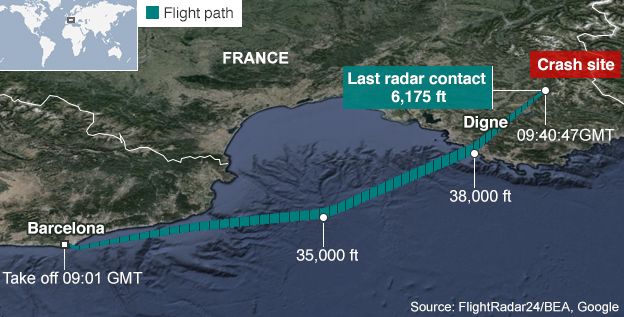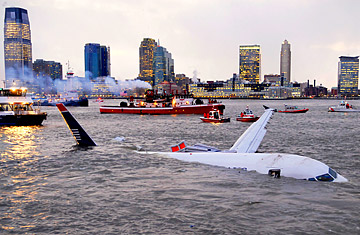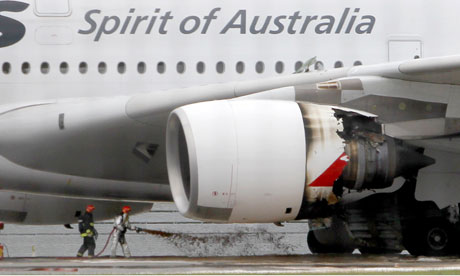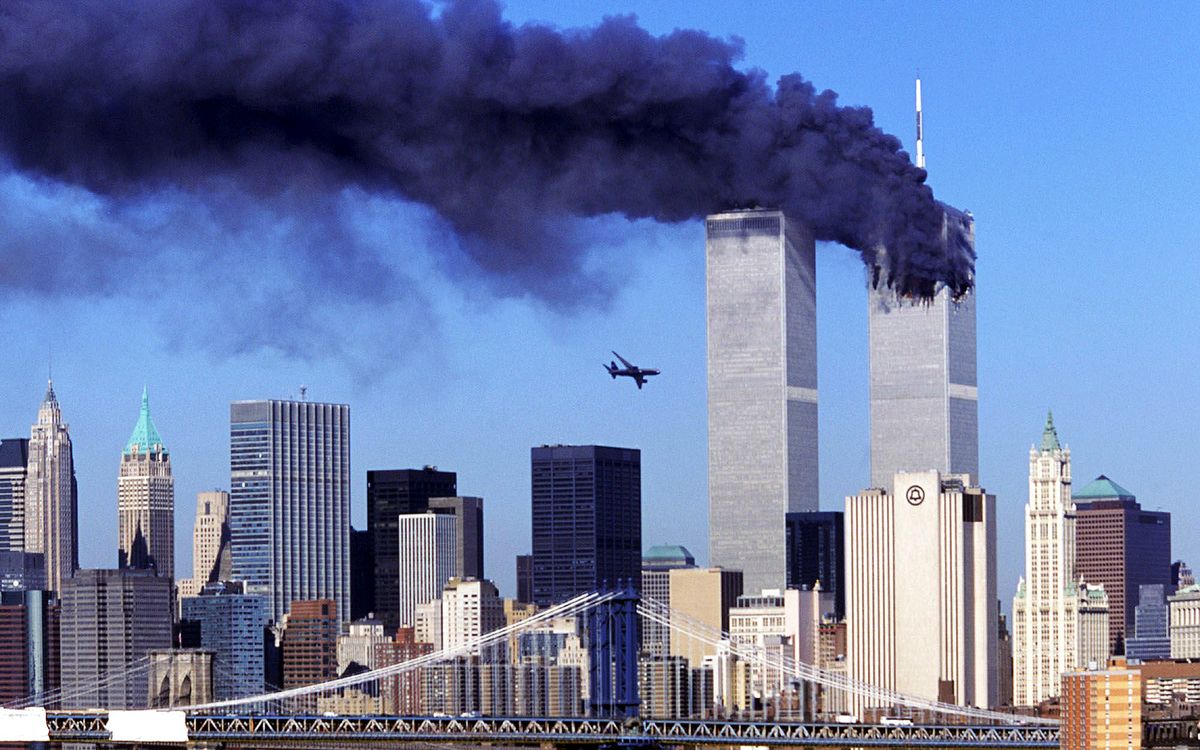Black Swan Theory refers on the so-called Black Swan events, unpredictable events that are beyond what is expected of a situation and has potentially severe consequences. Black swan events are characterized by their extreme rarity, their severe impact and impossibility of prediction.
The Black Swan Theory was developed by Nassim Nicolas Taleb. Since Taleb is a finance professor, writer and former Wall Street trader, the theory is originally connected with finance sector. Despite this, Black Swan theory can be applied to any other sector, including aviation. In the following section, read about the aviation moments that are termed as Black Swan events.
- Germanwings Flight 9525
On 24 March 2015 at 09:00 GMT, Germanwings flight 4U 9525 took off from Barcelona Airport in Spain heading for Duesseldorf, Germany, with 150 people on board.
The Airbus 320 began travelling over the sea towards France and climb to 38,000ft (11,600m).
At 09:30 the plane made its final contact with air traffic control. Shortly afterwards, the captain told the co-pilot Andreas Lubitz he was leaving the cockpit and asked him to take over radio communications. The cockpit door is heard opening and closing on the recording. Seconds later, the selected altitude was changed from 38,000 ft to 100 ft and the plane began its descent.
At 09:33, the plane’s speed increased. Air traffic control tried to contact the co-pilot but received no answer. At 09:34 a buzzer requesting access to the cockpit sounded. Knocking and voices asking for the door to be opened can be heard until the end of the recording. Last radar position of the plane registered at 6,175ft, just 2,000ft above ground. The “Terrain, Terrain, Pull Up, Pull up” warning was triggered at 09:40:41 and it continues until the end of the recording at 09:41:06 and the moment of the collision. During the last moments of the recording passengers can be heard screaming. The plane hit the mountain at 700km/h (430mph) an hour.
150 people were killed in this Black Swan event. This decision of co-pilot Andreas Lubitz meets all conditions to become a black swan event: it is extremely rare, has severe impact and was impossible to predict.

- Malaysian Airlines MH370
On 8 March 2014, Malaysia Airlines flight MH370 took off from Kuala Lumpur for Beijing and it never landed. Five years after the plane disappearance with 239 people on board, it is still unsure where it crashed or why. Since there are still no findings on what really happened, through the years few theories are developed.
- A Northern landing
According to the radar, MH370 started on a northeast route to Beijing, then turned and flew south-west, and then turned again; heading north-west, up towards India. After termination of radar coverage, investigators used satellite data for the rest of MH370’s journey. The satellite data showed MH370 was travelling further and further away from the satellite – but it was unknown whether it was moving south towards the sea near Australia or was moving north and inland into Asia.
However, this northern landing idea was denied in 2015 by the discovery of debris off the coast of Africa.
- Loss of oxygen and a crash near Western Australia
After finding the debris of MH370 on beaches across east Africa, experts for ocean currents concluded that plane crashed in the southern Indian Ocean near Western Australia, and ocean currents then transported debris to Africa a year later.
According to this theory, fire or some kind of incident caused a loss of oxygen, which knocked out the crew and passengers before they could land. Once they were unconscious, the plane kept flying on autopilot over the Indian Ocean until it ran out of fuel. This theory is still official theory of the Malaysian government and the Australian Transport Safety Bureau (ATSB).
- Suicidal mission
In 2016, US investigators and the ATSB discovered that the personal flight simulator in Captain Zaharie’s home had been used to draft a route into the southern Indian Ocean, similar to the route believed to be taken that fateful day. Despite, this theory is strongly denied by ATSB and the Malaysian government.
- The 25,000sq km priority zone
In 2017, the ATSB released its report on this mystery. Until than 120, 000 sq km was covered by search with no new evidence. So they developed the theory that area located north of their search called “priority zone” is probably the location of crash. In 2018, the 25,000sq km “priority zone” was searched with no new findings.
After 5 years of MH370’s disappearance and after 200,000sq km covered without success, there is still no clear evidence of where it crashed and what caused it.
- US Airways flight 1549
On January 15 2009, US Airways Flight 1549 departed New York City’s LaGuardia Airport for Charlotte, North Carolina, before striking a flock of Canadian geese five minutes after takeoff. A bird strike that is serious enough to damage an engine is exceedingly rare, but a double bird strike bad enough to disable both engines is a true example of a Black Swan Event.
At the moment of impact, both engines of the Airbus A320, carrying 150 passengers and five crew members, lost power over New York City and began to lose altitude. The cockpit crew had three choices: return to LaGuardia, push on toward Teterboro Airport in New Jersey, or land in the Hudson. The plane was going too fast to return to LaGuardia. Getting the plane to Teterboro would have been risky, since the airport’s short runways are suited for a large commercial jet. This left only third option as the safest choice. The Hudson River is wide, and the water is relatively calm. The plane was also filled with jet fuel, which helped it stay afloat long enough to evacuate. Captain Chesley Sullenberger could not have picked a better spot on the river to land. The location, near New York City’s bustling Midtown, is also, where several ferry lines cross. Because of this, boats were on the scene in a matter of minutes.
Sullenberger’s training and experience as a US Air Force fighter pilot had prepared him for an emergency and he was able to use it to safely guide the plane to a landing on the Hudson River. Because of the quick thinking and action of the crew members, all 155 passengers aboard survived the crash-landing.

- Qantas flight QF32 A380
On 4 November 2010, aircraft of Australian airline Qantas has made an emergency landing at Singapore Changi Airport.
The flight took off from London, over Singapore to Sydney. Engine failure occurred shortly after takeoff in Singapore. One of its engines blew up in mid-flight.
The plane ascended above 6,000 feet in good weather with the seat belt sign about to be turned off. Overhead Batam Island, Indonesia passengers reported hearing loud bangs and seeing flames, which appeared to be from the engine. EASA said an oil fire inside the engine caused the explosion on the engine of the Qantas jet. All the other engines were not operating correctly and with the left wing also badly damaged, the plane was then left with under half of the controls still working and was completely out of balance. Every system in the aircraft was affected. Flight controls were also damaged. In fact, 65 percent of roll controls were lost. Despite, the plane returned to its departure airport in Singapore and landed safely. Surprisingly, the plane stopped just 100m from the end of the runway. Two hours after landing, all passengers and crew safely departed the plane. None of the 469 passengers was injured.

- The attack on 9/11
On September 11, 2001, 19 militants associated with the Islamic extremist group al-Qaeda hijacked four airplanes and carried out suicide attacks in the United States.
Here is short reconstruction of a Black Swan event:
- American Airlines flight 11 – at 7:59 AM takes off from Boston’s Logan International Airport headed for Los Angeles. Aboard are 11 crew members and 81 passengers, including 5 hijackers. At 8:14 AM Flight 11 has its final communication with air traffic controllers, and this is probably the time when plane is hijacked. At 8:46:40 AM hijackers fly the airplane into the North Tower of the World Trade Center (WTC) in New York City. The impact occurs between floors 93 and 99. The crash instantly kills hundreds, including all those on board.
- United Airlines flight 175 – at 8:14 AM takes off from Boston, headed for Los Angeles. Aboard are 9 crew members and 56 passengers, including 5 hijackers. At 8:42 AM Flight 175 makes its last communication with air traffic controllers. At 8:58 AM Flight 175 sets a course for New York City. At 9:03:11 AM Flight 175 crashes into the South Tower of the World Trade Center, striking between floors 77 and 85.
- American Airlines flight 77 – at 8:20 AM departs from Dulles International Airport near Washington, D.C. for Los Angeles. Aboard are 6 crew members and 58 passengers, including 5 hijackers. At 8:51 AM Flight 77 has its last radio communication. At 9:37:46 AM Flight 77 hits the Pentagon in Virginia 125 people on the ground and in the building are killed.
- United Airlines flight 93 – at 8:42 departs from Newark International Airport in New Jersey, headed to San Francisco. Aboard are 7 crew members and 37 passengers, including 4 hijackers. At 9:29 AM hijackers on flight 93 attack the cockpit. At 9:41 AM the transponder from flight 93 is turned off. Flight 93 crashes in a field near Pennsylvania, killing everyone on board. The plane would have reached Washington, D.C., its suspected destination in 20 minutes.
In total, almost 3,000 people were killed during the 9/11 terrorist attacks.

- Airbus A300B4-200F
On 22 November 2003, Airbus A300B4-200F cargo plane owned by European Air Transport (DHL Express) took off from Baghdad, Iraq headed to Muharraq, Bahrain, with three crew members.
Shortly after takeoff airplane was struck by a missile on the left wing tip. Wing damage resulted with a fire and complete loss of hydraulic flight control systems. The aircraft started to pitch rapidly up and down, oscillating between a nose-up and a nose-down position, trying to re-establish the right angle. After 10 minutes, the crew managed to harmonize climbs and descents and initiated landing to Baghdad International Airport.
Using engine thrust as the only pilot input crew made an injury-free landing of the seriously damaged A300.
These black swan events are proof that nothing is impossible. They are also a call to raise the level of the aviation safety awareness. Sometimes a good crew training can save the lives of people. A good SMS program will never be a bad investment.







